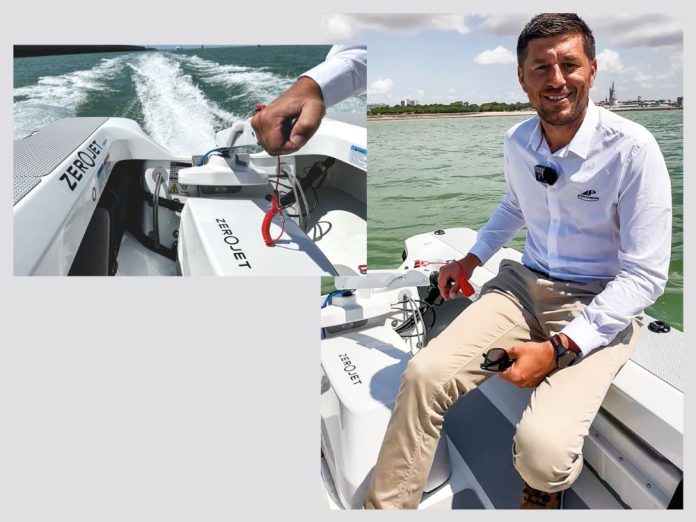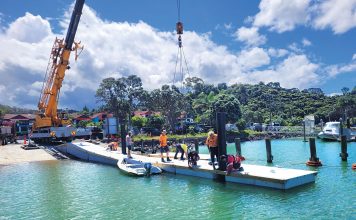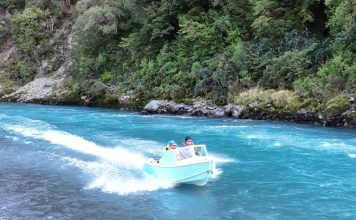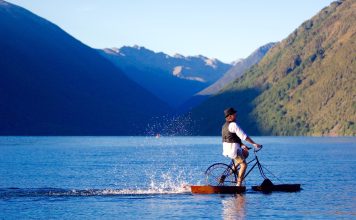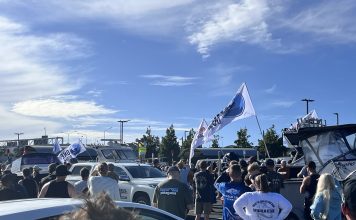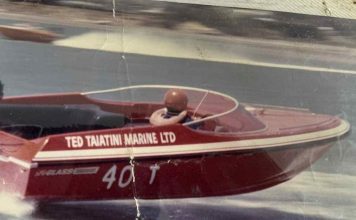Saucy Jane is the name of Bill Hamilton’s first successful jetboat, now lost to history, and of Jim Lapsley’s homebuilt working replica, which is very much alive.
Jim Lapsley is the holder of a very special, very personal list. It’s not a list of ‘things to do’; instead, it’s a list of what he considers the 10 most significant boats in New Zealand’s history. It includes Takitimu, one of seven waka believed to have bought first Polynesian settlers to Aotearoa; Endeavour, Captain James Cook’s ship that visited these shores in 1769; and Dunedin, which in 1874 became the first ship to successfully transport a full cargo of refrigerated meat from New Zealand to England. There’s another name on the list, perhaps less known but whose legacy today spans the globe: Saucy Jane. This very simple 13ft dinghy was Sir William (Bill) Hamilton’s experimental boat and the first successful jetboat of its kind that would plane and allowed the user to travel upriver. And, in Jim Lapsley’s opinion, the vessel thoroughly deserves its place.
“Just think about this – every single waterjet-propelled vessel in the world, including large ferries and launches, as well as jet boats, jet skis, and outboard jets, can all trace their DNA directly back to Saucy Jane which motored up the Ohau River in the Mackenzie Country at Easter, 1954,” he says. It’s a unique chapter in the country’s history, and while it wasn’t the first jetboat as such – Campini had one in Italy in the 1930s, while the Hanley hydro jet was built in the US – Hamilton’s was the first practical and workable jetboat.
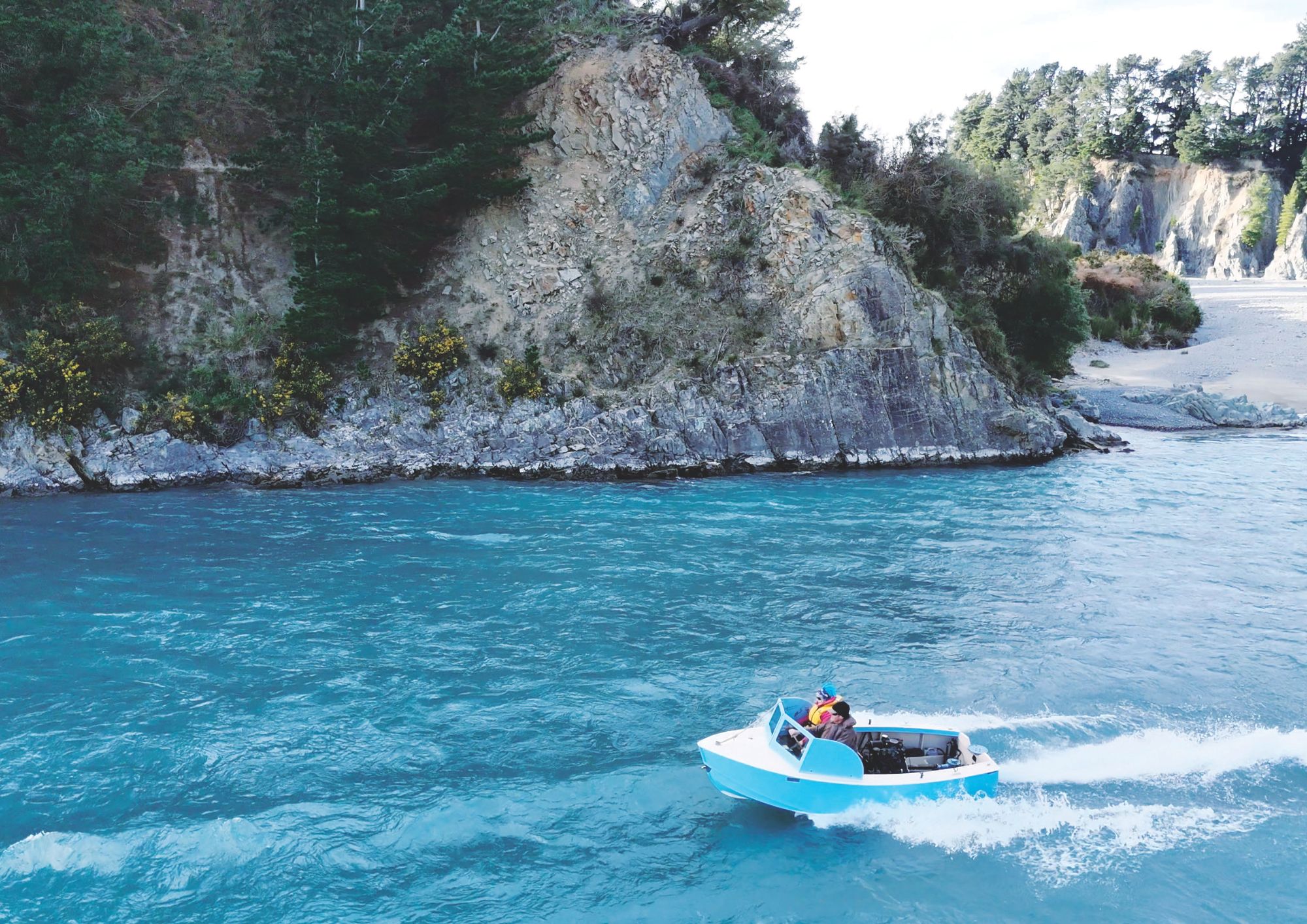
Jim was always intrigued by the story of Saucy Jane, first owned by legendary Bill Hamilton in 1953–54 and then sold or given to Alf Dick and later to George Davison. Sadly, it’s been lost to history, believed to have been eventually scrapped somewhere in Christchurch.
“I’d been through all the stages of owning a boat – old boats, racing, adventure boating, building my own boats – and I simply thought, ‘Why not build a working replica?’ I’m retired and I wanted a project. I thought, ‘How hard can it be to build a dinghy?’ But boy oh boy, how wrong was I?”
The project began in 2017 and was to last six years. “I had three good photos of Saucy Jane and George Davison was kind enough to email me some basic measurements, and that’s all I had to start. So, I drafted the first design from the photos and email and then had Naval Architect Dan Leech put my drawings onto a DFX file for the plywood hull that I built here in the shed.”

A female jig was used, and the plywood sheets were attached, glued and fibreglassed. The internal frames were then added for strength, followed by the top deck and windscreen. Several other parts of the hull, including stringers, utilise native timber such as kahikatea and rimu.
Building the jet unit proved to be the most significant challenge of the entire build. Jim briefly considered using a Rainbow unit – as there are still some available – but figured if he was serious about an exact replica, he had to go the whole way. Luckily the original jet unit was kept and is on display at Hamilton Jet in Christchurch and, with the support of the Hamilton Jet company, Jim took it to pieces.

“I then had design engineer Darren Gamble completely redraw that original unit, and that meant we had full working engineering drawings from which we could rebuild it.” Jim made the intake and grille himself, and Hamilton Jet cast the impeller. Some of the parts for the unit were cut and welded from Gamble’s DFX files by Templeton Engineering, while the gearbox was built by Jason Froome and the team at Gear Cutting and Engineering in Christchurch.
“The skill of those guys to create a gearbox and get it to run so quietly is quite remarkable. While the original jet unit had 1.8 to 1 gearbox, this was geared down to 1.6 to 1 to get the impeller spinning a little faster. The rebuilt engine also included oversized pistons, new conrods, adjustable tappet lifters, larger valves, and a modified camshaft – all to eke out a few more horsepower.” After all, the original Saucy Jane was powered by a simple E93A Ford engine generating a little over 30hp.
“These were incredibly popular engines and used on everything from cars to boats and even a ski field lift tow. There are still a few of these robust old engines around and I was fortunate to get my hands on one. Nonetheless, it was an eye-opening expense to get it rebuilt,” he says.
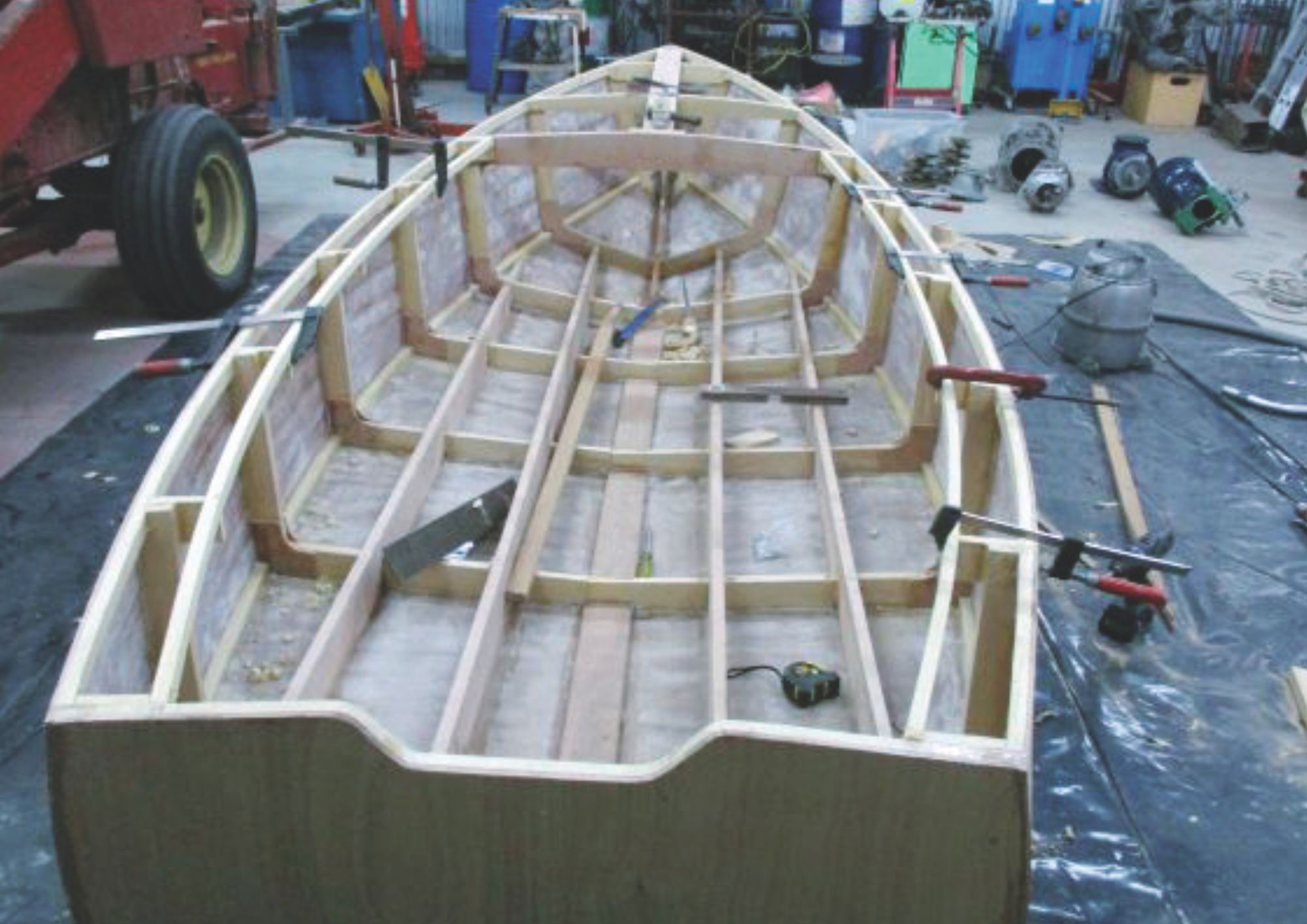
Jim also recovered an old hanging trailer on which many old jetboats were transported and had it sandblasted, repaired and made road legal. It’s even adorned with the personalised number plate with Hamilton’s initials, CWF (Charles William Feilden). Interestingly, while Jim’s boat is an exact replica, there is, in fact, one single part utilised from the original Saucy Jane.
“When I got the original jet unit from Hamilton’s and pulled it apart, one of the bolts was completely rusted and broke as we tried to remove it. I replaced the bolt when we put it all back together, but I had half the bolt from the original unit. So I found a place to put it on the new jet unit and that means I have a piece of the original Saucy Jane from when it first ventured up the Ohau River in early 1954.”
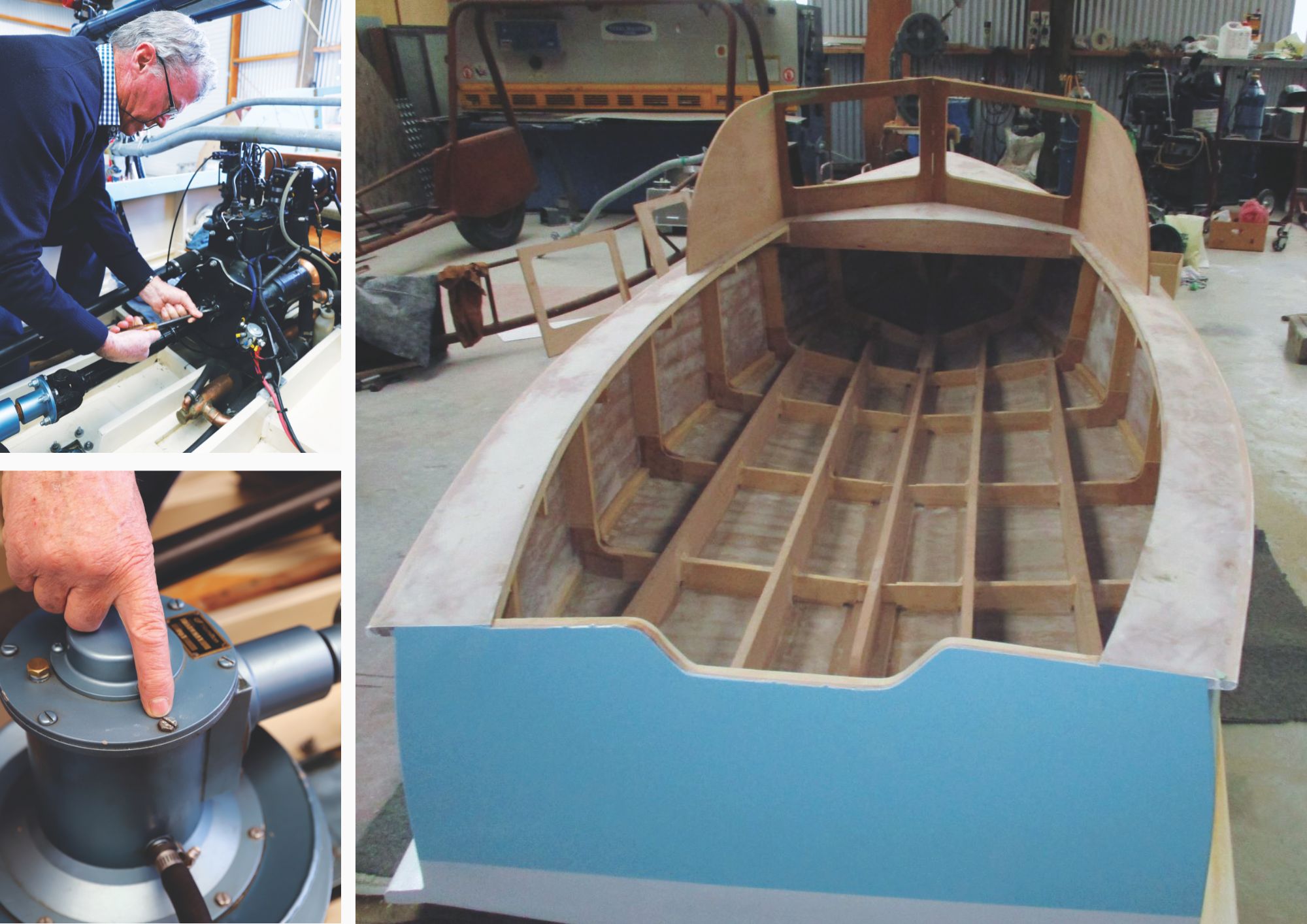
The craftsmanship and detail in the replica boat are stunning; Jim has left no stone unturned in his attempts to have it as authentic as possible. That includes a replica wool fadge seat cover emblazoned with Irishman Creek, the name of the sheep station near Tekapō where Hamilton undertook the work. Various branches of the Hamilton family, as well as other famous jetboating names, gave permission for their signatures to be etched onto the dash and side screen; the teal colour is as close as possible to the original, and even the fuel cap is located in the exact same spot.
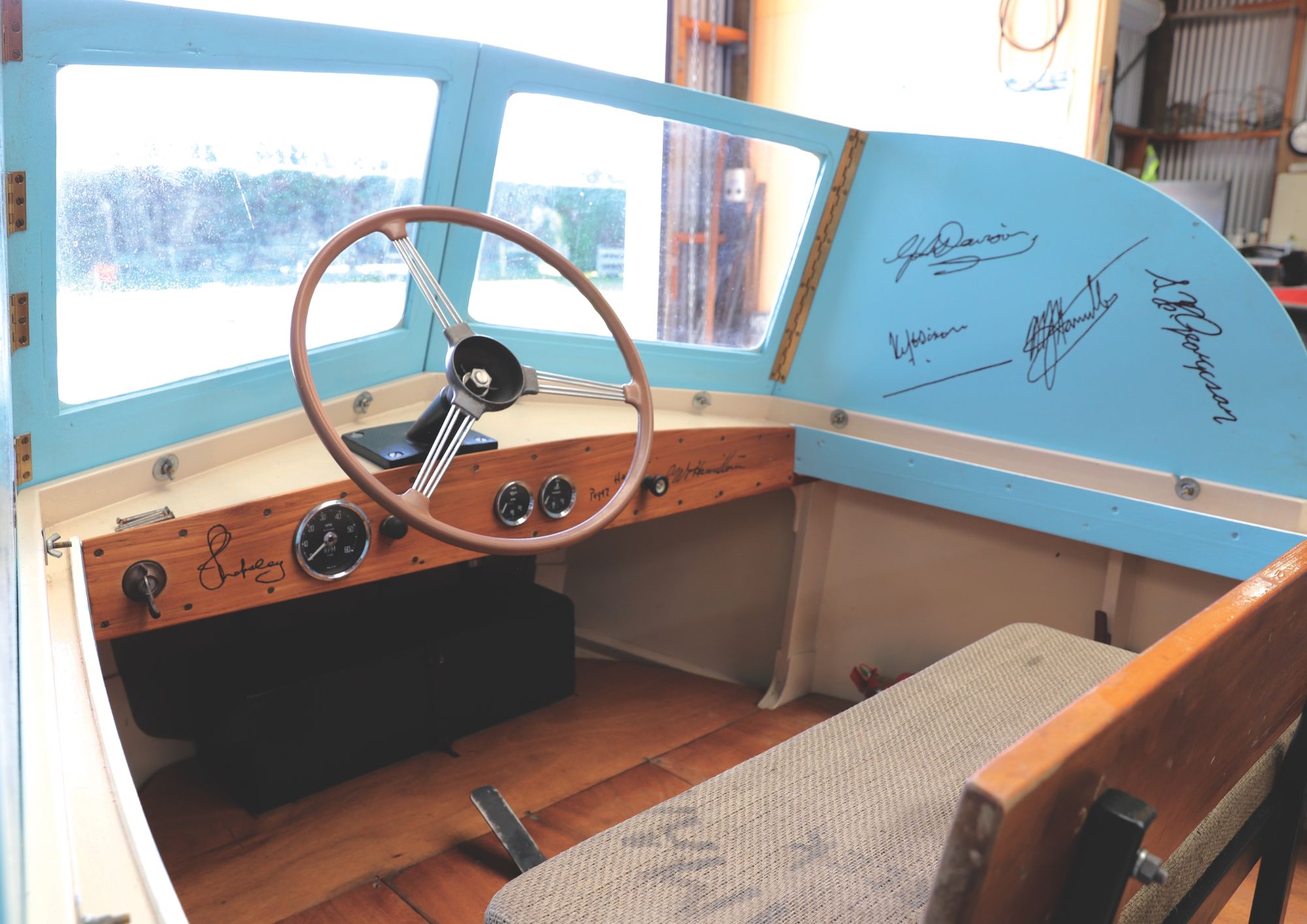
Jim has left no stone unturned in his attempts to have it as authentic as possible.
Saucy Jane gets onto the water regularly, most recently the Jetboating New Zealand mid-winter club run through the Waimakariri River Gorge to commemorate Bill Hamilton’s birthday. And that, of course, raises the question of how it handles.
“The performance is underwhelming, but it’s awesome to drive,” he says. “We can get her up to 30mph downriver; you slide into corners like a rally car, and it handles beautifully. In fact, I had a guy try to follow me up the Waimak on one occasion, but he couldn’t go far with me because Saucy Jane’s hull has a 5 degree V which allows us to access some very shallow spots.
“The public reaction from boaties and non boaties alike swells my heart; people think it’s the original, and that’s exactly what I wanted. It couldn’t be new and shiny; it had to look like it had a few scratches and blemishes, and the colour is as close as possible to the original. I can’t stop anywhere while towing it without people coming out of the woodwork to ask about it. It’s mind blowing.”
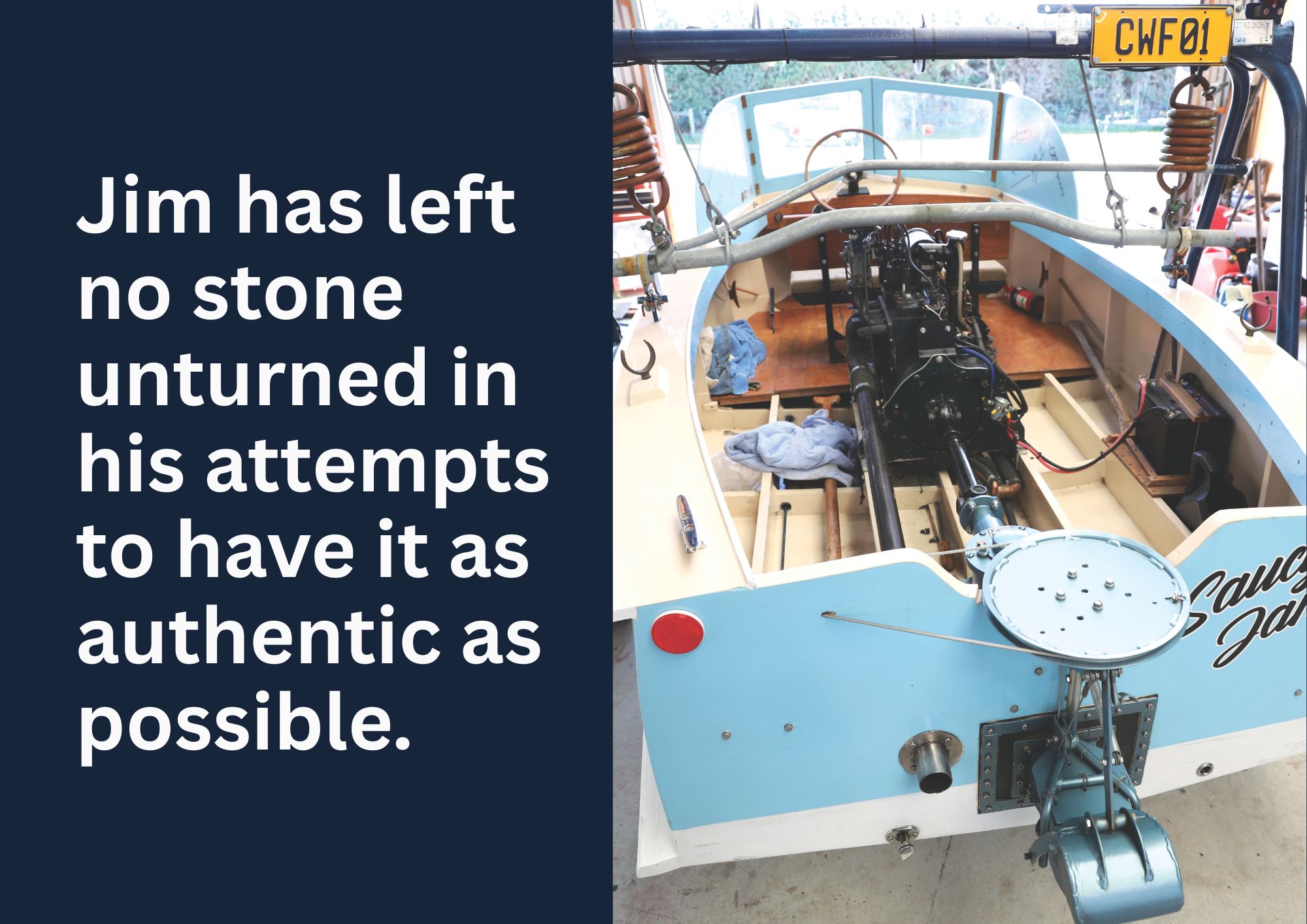
Now retired and living near Christchurch, Jim’s refurbishment projects don’t stop with Saucy Jane. In his large shed lie several other hulls under repair or reconstruction as well as one small dinghy that he’s building with the help of his young grandchildren. Boating’s been a huge part of his life, and he seems intent on ensuring another generation enjoys the same excitement and opportunities.
Jim grew up in Timaru, but his school holidays were spent visiting Grandad at Lake Manapouri and it was here that his passion for boating began. “They had a lovely launch while my dad had a small boat with a Seagull engine,” he recalls. “My brothers and I spent many, many hours mucking around in boats and one day, while spluttering along with the Seagull, we were passed by a jetboat, and it was just a ‘wow’ moment for me.”
Soon after, a rough as guts plywood hull with a Ford 10 engine and rainbow jet unit came up for sale in Timaru and Jim pounced. “So, I owned my first jetboat at the age of 16 – long before I had a car,” he says with a laugh. “I spent hours playing, tinkering, repairing, improving, and using that old boat on the Opihi and Temuka Rivers. I was just fascinated with jetboats and where they could take me.”

But, for a man so intrigued by the past, Jim also has his eyes clearly on the future. “I want Saucy Jane to be well used and to still be around in 400 years in a museum. I want my family to use it, and I want my grandchildren to use it, but I also want future generations to at least be able to see it. So, it was built to last.”
And Jim is quick to acknowledge that undertaking the Saucy Jane project would not have been possible without the “110%” support of his wife, Noeleen. And, as for the name Saucy Jane? Well, no one’s exactly sure, but there is some suggestion that Bill’s wife, Lady Peggy, chose it, as she was an avid reader of Enid Blyton books, and one of those books is a story about a family and their boat, Saucy Jane.
BNZ














